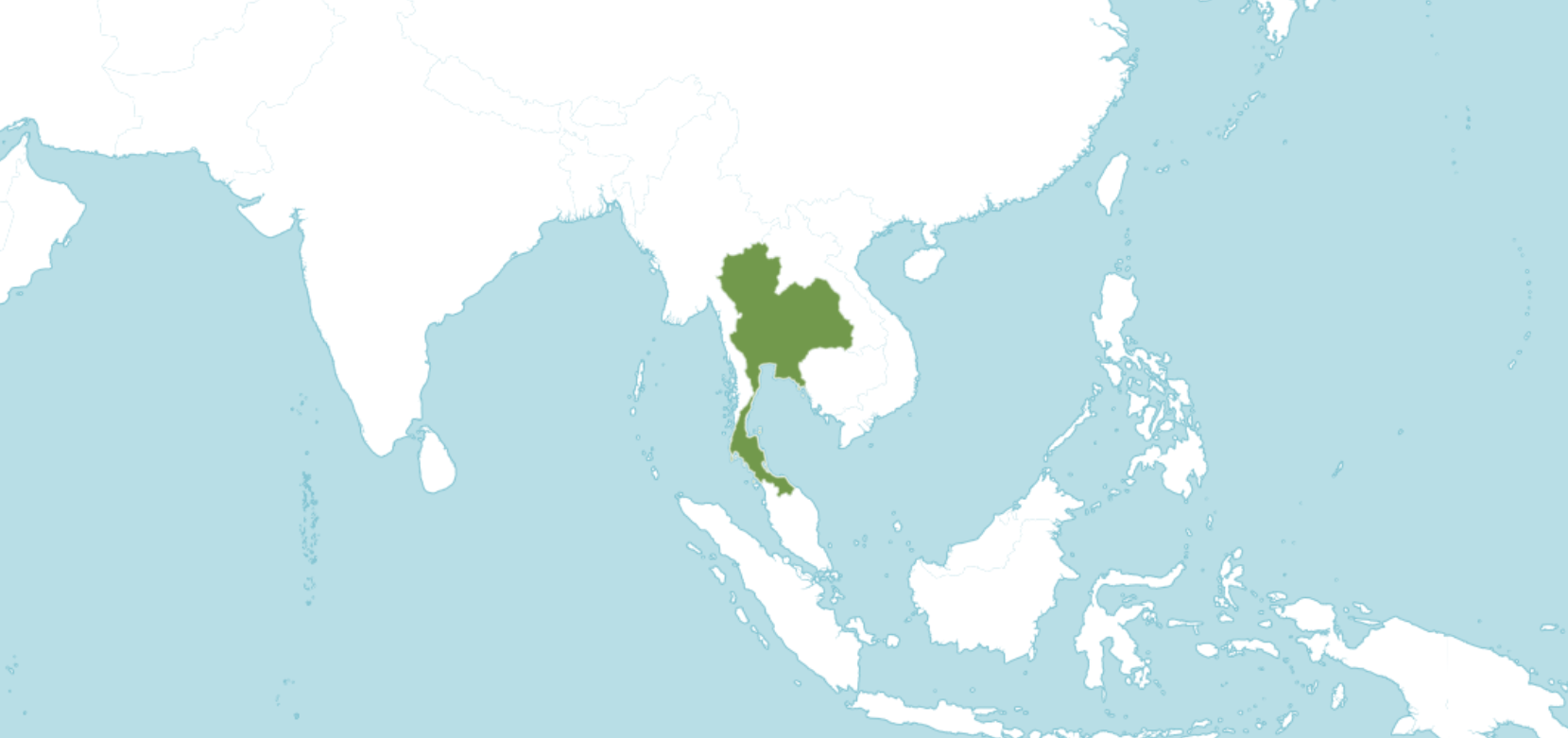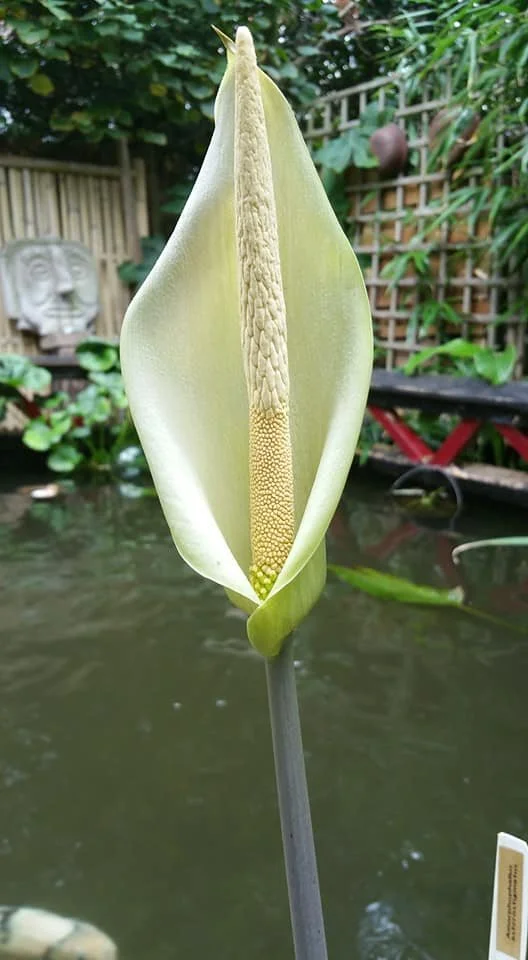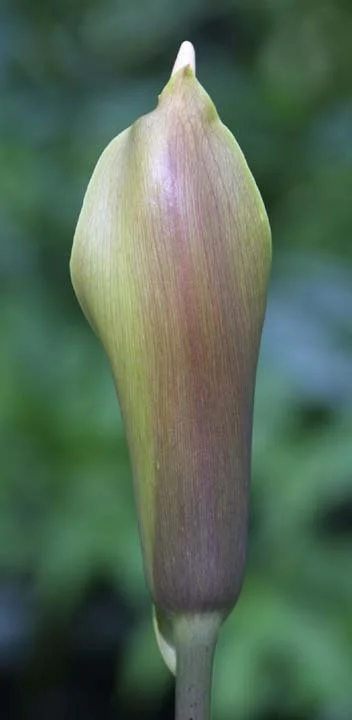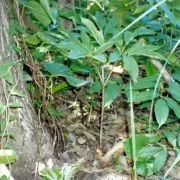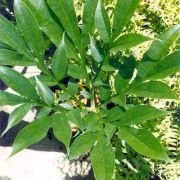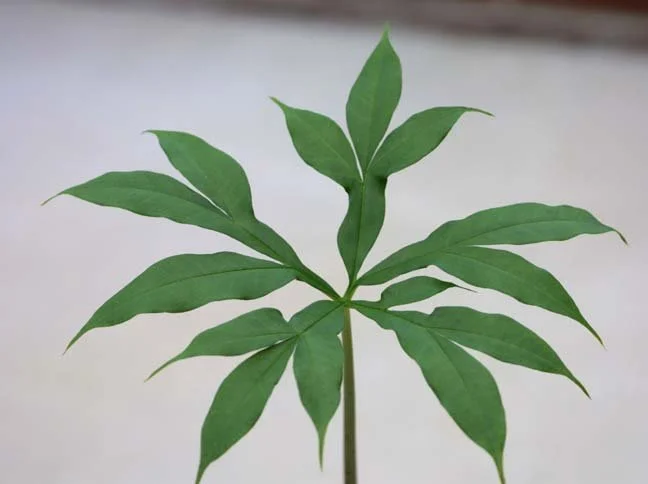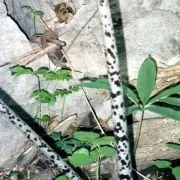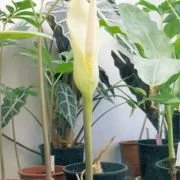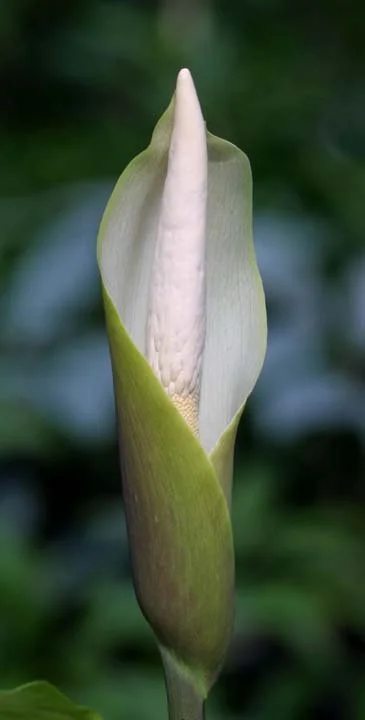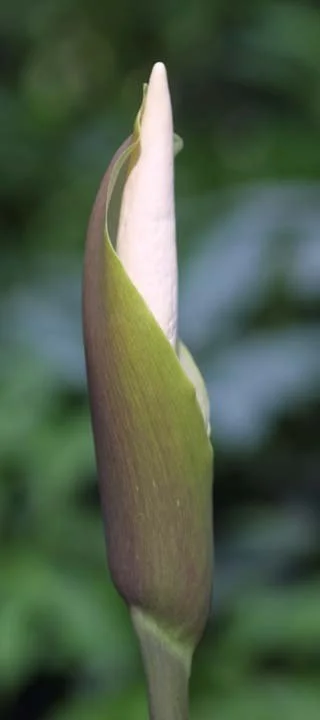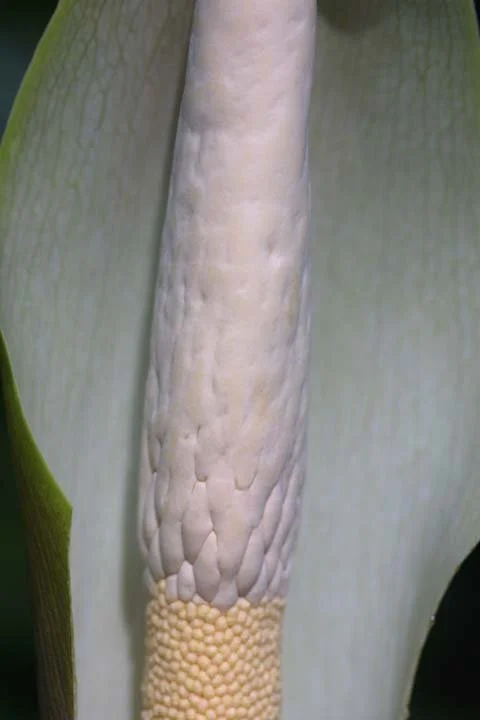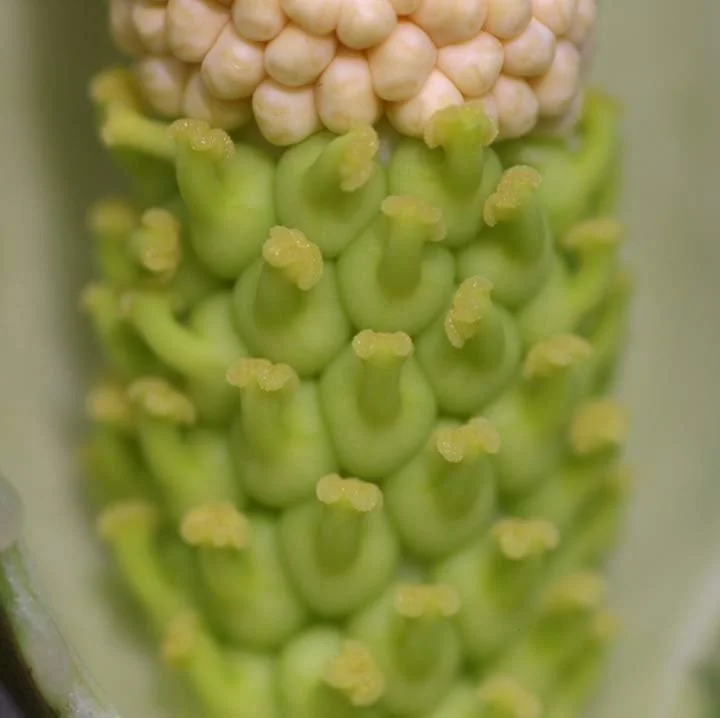AMORPHOPHALLUS ASTEROSTIGMATUS
ORIGINAL DESCRIPTION:
Amorphophallus asterostigmatus Bogner & Hetterscheid, spec. nov.
Tuber depresso-globosum. Nervi laterales foliolorum approximati (2-3 mm distantes). Spadix spatha brevior, appendix basi staminodiis rhombicis ferens. Stigma magnum, capitatum, ad instar asteris.
Type: Bogner 2096 (L, holo,spirit; iso at K, M), Thailand, s. loc. (living tubers bought in the flower-market in Bangkok; flowered in cultivation in the Munich Botanic Garden and in the private collection of H. Koerper, 1989 and 1990).
SYNONYMS:
HOMOTYPIC SYNONYMS: N/A
HETEROTYPIC SYNONYMS: N/A
ACCEPTED INFRASPECIFICS: N/A
DISTRIBUTION: Thailand | CENTRAL: Lop Buri, Saraburi. Endemic. The type (J.BOGNER 2096, holotype L, isotypes K, M) was purchased from the flower-market in Bangkok.
CLIMATE: Unknown
ECOLOGY: On slopes with limestone boulders.
SPECIES DESCRIPTION:
Tuber depressed-globose, 5-7 cm diam. and 3-4 cm deep, dark brown, with a few short rhizomatous offsets. Petiole 60-70 cm long, 1.8 cm in diam. at base, 0.8 cm in diam. above, smooth, greyish-reddish to greenish with some dark reddishbrown spots. Leaf blade c. 50 cm in diam., divided into three main parts; leaflets more or less elliptic, 6-19 cm long, 2-4.7 cm wide, long decurrent on the rhachis, base cuneate, apex acuminate, upper side dark green, lower side lighter green, rhachis and lower side of main veins coloured as petiole, main vein very strong, primary and secondary lateral veins not prominent, quite close to each other and only 2-3 mm distant, innercollecting vein c. 2-3 mm distant from the margin.
INFLORESCENCE:
Inflorescence preceded by four membranous cataphylls, 4-25 cm long. Peduncle 35-42 cm long, 1.3 cm in diam. at base, 0.7-0.9 cm in diam. above, greenish to greyish mauve with a few darker spots. Spathe erect, as long as or longer than spadix, base convolute, length 15-18 cm, width 7-8 cm., apex more or less cuspidate with a c. 3 mm long tip, outside greenish with a faintreddish tinge, inside cream, greenish towards the base; base insidesmooth. Spadix subsessile (lowermost 1.5-3 mm devoid of flowers), 11-12.5 cm long; female part 1.0-2.8 cm long, 1.5-1.6 cm in diam.; male part 2.7-3.5 cm long, c. 1.3 cm in diam.; appendix elongate-conic with a rounded apex, 6.0-7.5 cm long, at base c. 1.3 cm in diam., smooth, yellowish to cream-coloured, the basal 1.5 cm with inconspicuous, irregularly elongate-rhombic, flat, sterile structures (staminodes), these 3-5 mm long and 2-3 mm wide.Female flowers c. 4 mm long; ovary depressed-globose, 3.5-4.0 mm in diam., height 2.02.5 mm, light green, unilocular, style curved towards the spadix apex, c. 1.5 x 1.5 mm, golden yellow; stigma large, 2- to 4-lobed, but mostly 3-lobed, irregularly starshaped, c. 2.5 mm diam., papillate, yellow. Maleflowers consisting of 1-3 stamens, entirely yellowish orwith a reddish tinge at the apex; stamens broadly elliptic-oblong, 1.3-1.6 cm long and 1.0-1.2 mm broad. Thecae opening with a slit-like apical pore. Pollengrains inaperturate, ellipsoid, 56-60 x 40-43 gm, exine striate.
Chromosome number - 2n =26.
VARIEGATED FORMS: N/A
ETYMOLOGY: The species epithet comes from Greek, with astero (ἀστήρ) meaning star and stigmatum (στίγμα) meaning mark or spot, and in the case of Amorphophallus asterostigmatum, it refers to the star-shaped stigma (see photos above)
NOTES: The inflorescence of Amorphophallus asterostigmatus is most similar to that of Amorphophallus longituberosus (Engl.) Engl. & Gehrm., but the latter has 2-, 3-, or 4-locular ovaries, lateral pores, and a 2-, 3-, or 4-lobed stigma. Another conspicuous difference between both species is the shape of the tuber: depressed-globose in Amorphophallus asterostigmatus but elongate in Amorphophallus longituberosus. The erect, often cymbiform, mostly greenish to whitish spathe and the rather undifferentiated, smooth, elongate-fusiform appendix are shared with species like Amorphophallus longituberosus, Amorphophallus macrorhizus Craib, Amorphophallus sutepensis Gagnep., and Amorphophallus brevispathus Gagnep., all from Thailand.
Amorphophallus asterostigmatus is distinguished by its large star-shaped stigmas and the presence of apparently staminodial, rhombic structures at the appendix-base. The latter character is also found in Amorphophallus konjac Koch, Amorphophallus hohenackeri (Schott) Engl. & Gehrm., and Amorphophallus hewittii v. A.v.R.
CULTIVARS: N/A
HYBRIDS: N/A
REFERENCES:
Photos by Gijsbert Kortekaas

